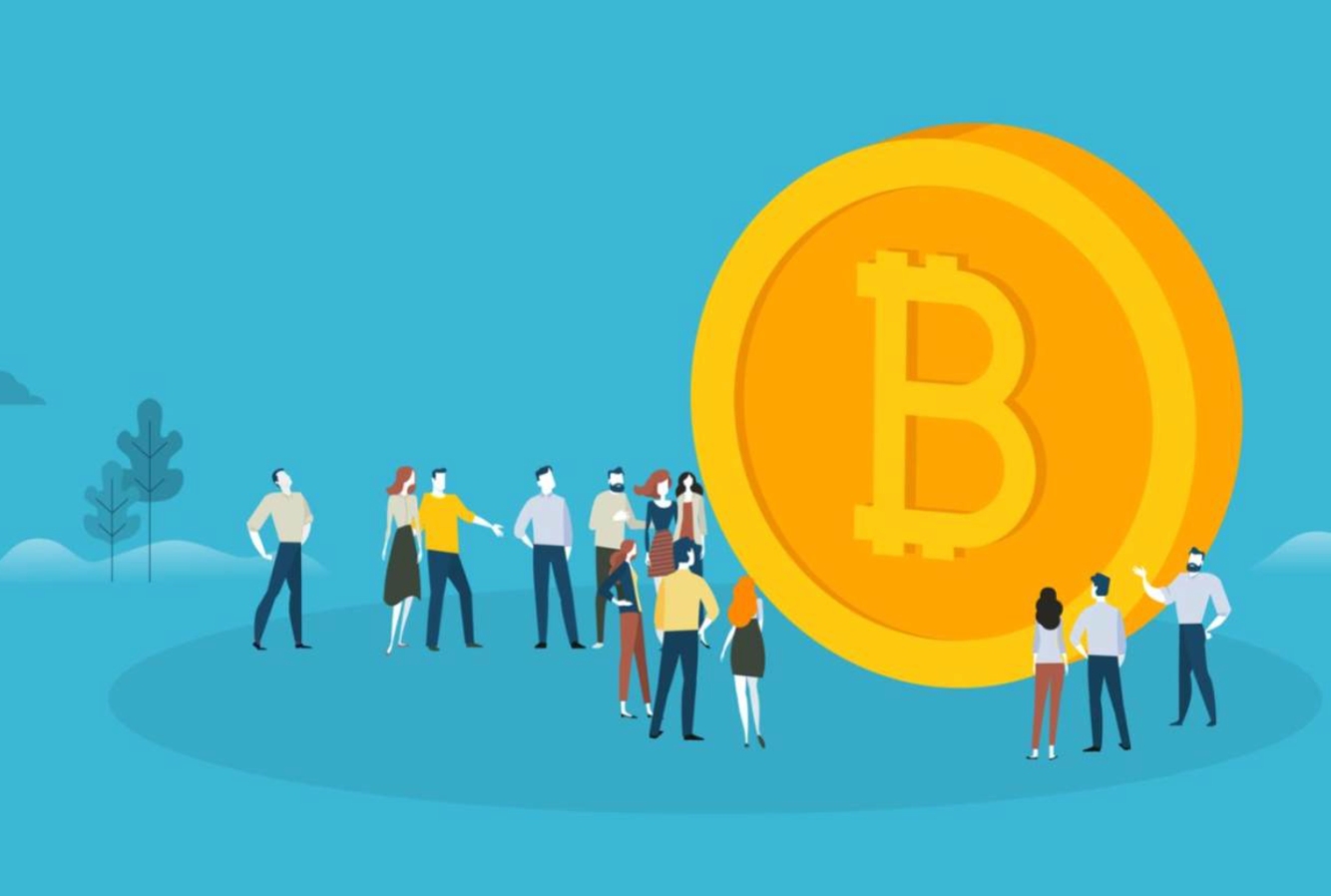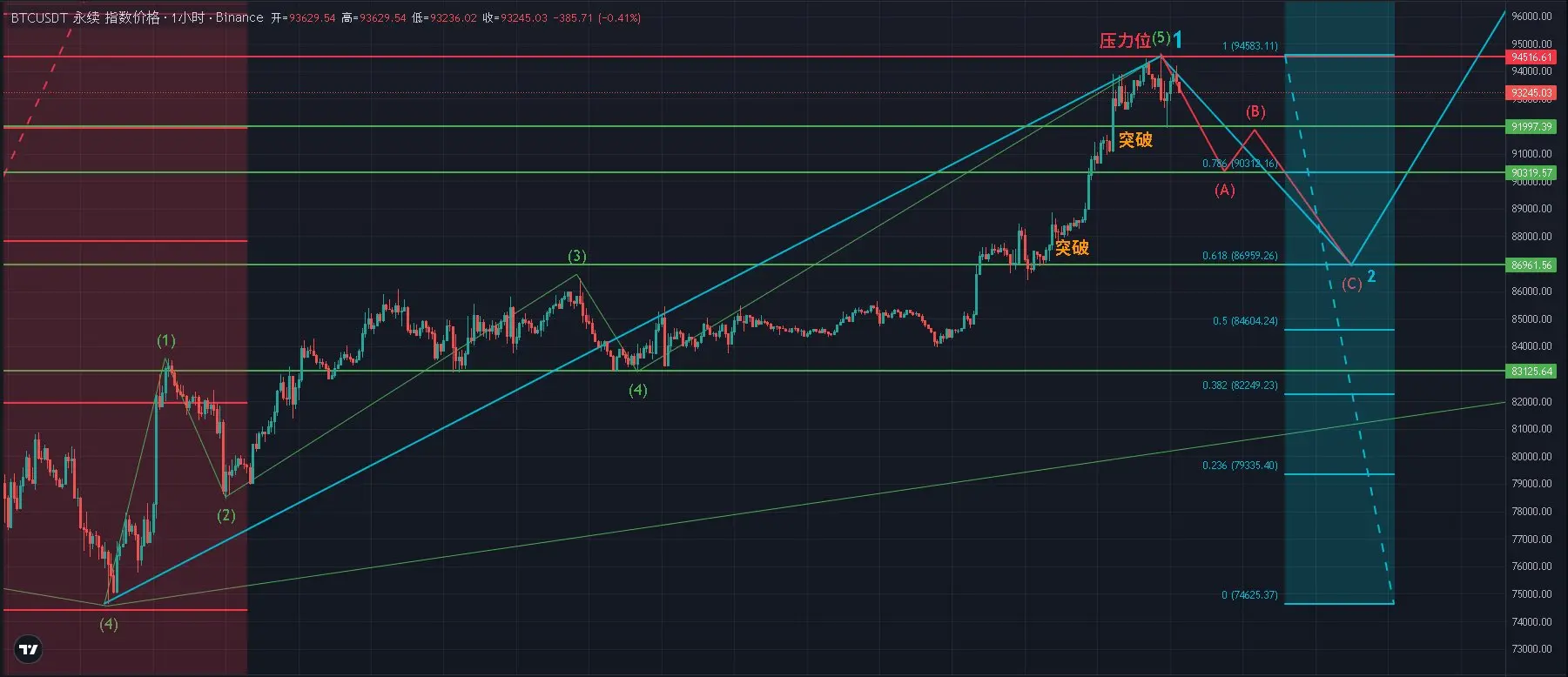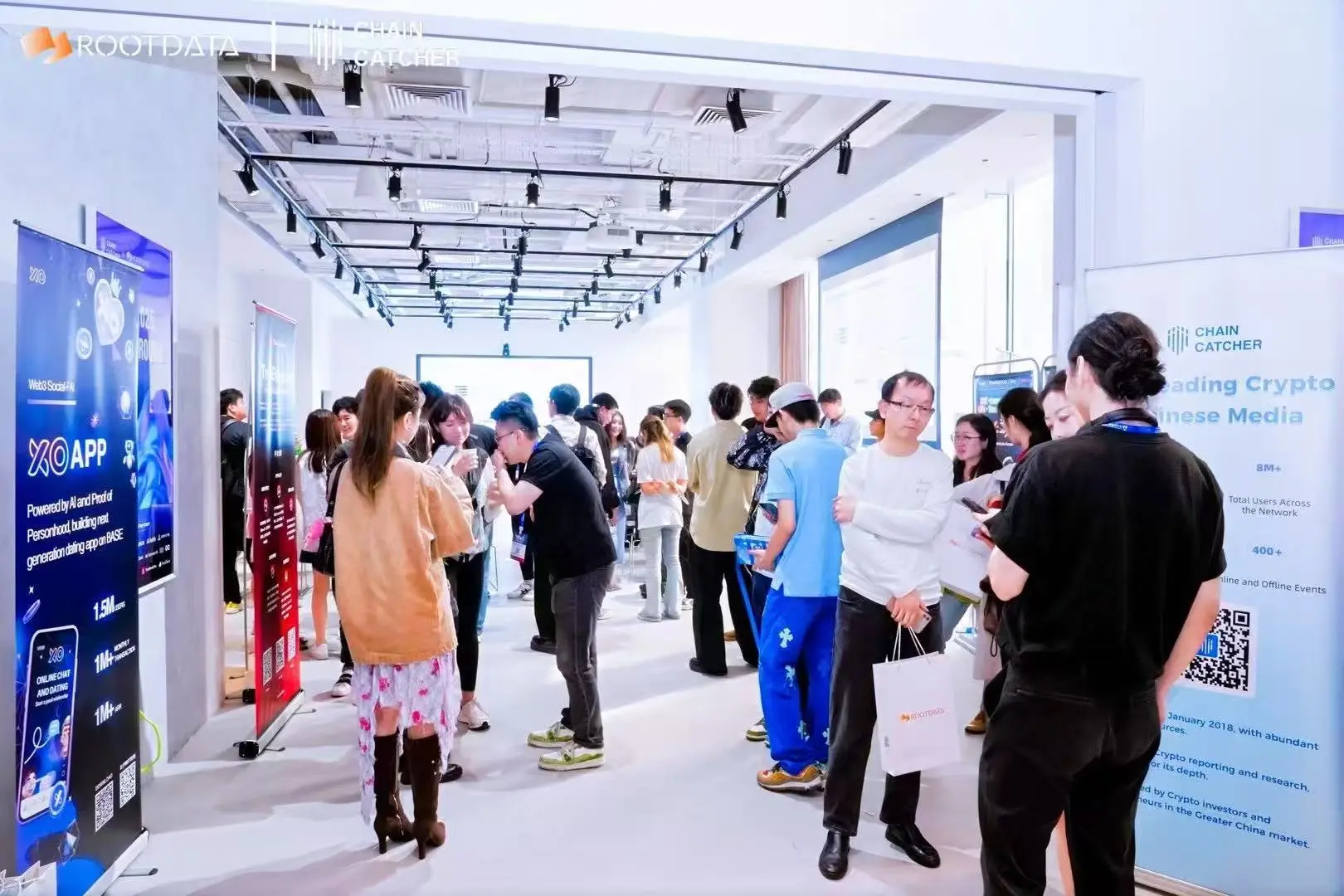The New York Times: Who orchestrated the exposure of the conspiracy between Avalanche and lawyer Kyle Roche?
Original Title: "He Went After Crypto Companies. Then Someone Came After Him."
Author: John Carreyrou, The New York Times
Translation: Qianwen, ChainCatcher
The mantis stalks the cicada, unaware of the oriole behind.
Kyle Roche is a rising star in the field of cryptocurrency law—until problems arose in his career. Who orchestrated the fall of this star?
In secretly recorded videos, lawyer Kyle Roche describes his close relationships with his cryptocurrency clients.
I. Rising Star
By the end of January 2022, when Kyle Roche arrived in London, he was already making headlines. At just 34 years old, he was one of the veterans in the emerging field of cryptocurrency litigation. He owned a law firm named after himself and had filed lawsuits against more than a dozen cryptocurrency companies, one of which resulted in a huge judgment against the so-called founder of Bitcoin .
Now new opportunities were beckoning him.
Two businessmen arranged for a plane to bring Roche from Miami to discuss investing in a new type of business he was forming, and a car took him to a luxurious townhouse in Mayfair to meet them.
That evening, Roche had dinner with one of the men, who introduced himself as Villavicencio from Argentina, at one of London’s most luxurious restaurants—Jean-Georges at the Connaught.
Roche said that when he woke up the next morning, he felt dizzy. He remembered nothing except being very sure that he had spotted Villavicencio's business partner—a Norwegian named Ager-Hanssen—lingering at a nearby table. This woozy feeling felt wrong to him because he believed he hadn’t drunk too much alcohol. Days later, when Roche flew back to Miami, he still felt unable to shake off this sensation, feeling vaguely uneasy.
Months later, one day last summer, Roche's world began to crumble. A website called Crypto Leaks published over twenty secretly recorded videos of his meetings with Villavicencio and Ager-Hanssen.
These videos portrayed Roche and his law firm, Roche Freedman, as tools profiting from cryptocurrency clients. In one clip, Roche revealed that a client, a company called Ava Labs, had provided him with digital tokens worth tens of millions of dollars, making him grateful to the company and its founder, whom he likened to a brother.
In other video clips, Roche gave the impression that he only cared about promoting Ava Labs' interests, even when representing other clients. He boasted that he had successfully diverted regulators' attention from Ava Labs and hinted that his lawsuits against other cryptocurrency companies were aimed at harming Roche's competitors.

In the video shot at Jean-Georges, Roche appeared to be heavily intoxicated, waving his hands and cursing, calling jurors idiots.
In the initial shock, Roche realized he had a big problem; these videos made him look corrupt and unethical. To defend himself, he published an article on Medium claiming that the videos were illegally obtained and taken out of context, and he denied colluding with Ava Labs.
But it was too late. One after another, the companies sued by Roche's firm filed motions to disqualify the firm from their cases. In October, the first of these motions succeeded: a federal judge in New York removed Roche Freedman from a case against Tether, the world's most widely used stablecoin operator.
Within days, Roche was forced to resign from the law firm he had founded. He said that as his career crumbled, he attended ethics courses and began seeing a therapist.
Roche became infamous for his loose lips and close relationships with clients. But at the same time, he was also a victim of an international trap. Who was the mastermind behind it?
II. The New Sheriff in Crypto
Roche grew up in a working-class family in Buffalo. He was the eldest of four siblings, sharing a bedroom with a twin brother who had an intellectual disability. Witnessing his siblings struggle with simple tasks while he thrived in school made him feel guilty and determined to succeed so he could support them one day.
After attending Purdue University and working as a management consultant for a few years, he entered Northwestern University's Pritzker School of Law. In the first semester of fall 2013, he became fascinated with cryptocurrency. According to his classmates, he constantly checked the Bitcoin price on his laptop during class. Roche cashed out before a major drop in token prices, making about $100,000 in profit, which he used to pay for his tuition.
At that time, Roche was a third-year student and co-wrote a paper with a professor discussing the advantages of Bitcoin as the first currency free from government interference, which later garnered commentary in The Wall Street Journal.
He said, "That was the first time I thought, maybe I could do something with this."
At that time, Roche was a first-year associate at Boies Schiller Flexner LLP. At that point, he was emerging as a crypto prodigy. A few days after an article in The New York Times was published, a colleague in Miami approached him about a Bitcoin-related case—he seized the opportunity.
In this case, a man named Ira Kleiman was confronting Australian computer scientist Craig Wright, who claimed to be the mysterious creator of Bitcoin. Kleiman sued Wright for deceiving his brother David (a computer forensics expert who passed away in his 40s) to profit from the billions of dollars' worth of Bitcoin they mined together in the early days.
The whole situation was shrouded in fog: there was evidence that Wright and David were indeed friends, and it was known that David always wore a cryptographic hard drive around his neck, which might have contained the password to a Bitcoin wallet. But many believed Wright was a fraud and questioned his claims about mining early Bitcoin blocks, let alone stealing money from others.
For Roche, this was what made the case appealing. If he could get Dr. Wright to hand over his documents during discovery, he might unravel Bitcoin's greatest mystery: the true identity of Satoshi Nakamoto. Roche and his colleague Velvel Freedman quickly devoted most of their time to this case.
In 2019, as the Kleiman case was heading toward trial, Roche encountered a new client embroiled in a dispute with a cryptocurrency company. Within just a few days, he negotiated a lucrative settlement for the client. As a token of appreciation, the client agreed to invest $7.5 million in Roche and Freedman to help them start their own law firm. Initially, Roche operated the firm from a co-working space in Brooklyn, but after the pandemic hit, he joined Freedman's team in Miami. Their firm, Roche Freedman, quickly gained attention.
At that time, a slew of startups rode the wave of Bitcoin, issuing new coins, driving up prices, and ultimately causing a crash. This reminded him of a common stock market scam known as "pump and dump," where fraudsters would post various information online to inflate prices and then short-sell stocks before prices plummeted, pocketing all the profits.
Regulators seemed to take no action, so Roche decided to take matters into his own hands. On April 3, 2020, Roche Freedman filed lawsuits against seven digital currency issuers, seeking class-action status, claiming they inflated the prices of unregistered securities with false statements and then sold them off, leaving retail investors to bear the losses.
It also sued four cryptocurrency exchanges for facilitating the issuers and provided some legal arguments for the SEC's lawsuits against Binance and Coinbase.
These lawsuits were just the opening act. Sixteen months later, Roche filed the largest securities fraud case of his career. The case accused British entrepreneur Dominic Williams and the entities he controlled of defrauding investors of billions of dollars by aggressively promoting and dumping a digital coin that claimed to revolutionize computing.
Williams boldly claimed that his Internet Computer blockchain (a decentralized computing network powered by a digital token called ICP) would replace the large cloud services offered by Amazon and Microsoft, becoming the primary computing platform for humanity. The price of ICP skyrocketed at launch, becoming one of the most valuable cryptocurrencies, but then plummeted by 92%—Roche's lawsuit attributed this collapse to massive sell-offs by Williams and other insiders. (Williams denied the allegations).
If cryptocurrency is the Wild West of finance, then Roche had declared himself the new sheriff. However, he would soon learn that with a sheriff comes enemies.
III. Huge Judgment

Emin Gun Sirer runs Ava Labs, a cryptocurrency company that gave Roche equity, with its tokens worth millions at their peak.
Around the time Roche was involved in his first pump-and-dump lawsuit, he met Cornell University computer science professor Emin Gun Sirer, who was incubating his own cryptocurrency project in the Brooklyn co-working space where Roche initially worked. Roche agreed to provide legal services for Dr. Sirer's company in exchange for equity and a small portion of the planned cryptocurrency tokens.
Such arrangements are not uncommon in the tech industry. Roche's former boss, David Boies, had made a similar deal with Theranos, the blood-testing company whose founder, Elizabeth Holmes, was later convicted of fraud. The scandals involving Theranos and another client, Harvey Weinstein, severely damaged Boies' reputation, but for Roche, he remained a role model.
When Roche struck a deal with Dr. Sirer in September 2019, he said he was unsure whether Dr. Sirer's project would succeed. At that time, the tokens he held were worth less than three cents each.
A year later, Dr. Sirer's blockchain, Avalanche, officially launched. As cryptocurrency became increasingly popular, the price of the AVAX token soared above $100, making Roche a millionaire.
The compensation agreement between Roche and Sirer was supposed to be confidential, but anyone looking to gather information about him could quickly find relevant details. In February 2021, Roche Freedman fired one of its partners, Jason Cyrulnik. He retaliated with a lawsuit that disclosed each partner's stake in the AVAX tokens.
That fall, the Kleiman v. Wright case went to trial in a U.S. District Court in Miami. Roche delivered a fiery opening statement, during which he repeatedly directed accusations at Dr. Wright.
Ultimately, the trial did not resolve whether Dr. Wright truly invented Bitcoin, but the jury ordered him to pay $100 million to Ira Kleiman for a company inherited from his deceased brother. (The judge later added $43 million in interest.) Roche's law firm earned fees exceeding $10 million.
With the Kleiman trial concluded, Roche turned to a project he and Dr. Sirer had been discussing: Ryval, a company that helps people raise funds on Avalanche to pay for lawsuits. Roche viewed it as a for-profit crowdfunding platform for litigation and believed it could create a fair legal competitive environment between individuals and large corporations.
But while he was plotting his new venture, someone was plotting his downfall.
IV. The Banquet of Hegemony

Norwegian venture capitalist Christen Ager-Hanssen was one of the people who invited Roche to London.
According to email copies reviewed by The New York Times, in December 2021, Roche received an email from an acquaintance introducing him to Villavicencio. Villavicencio claimed to be a colleague of Ager-Hanssen, a venture capitalist interested in Roche's new project. Roche did not know who these two men were, but he welcomed the approach: he was raising funds for Ryval, which had garnered some attention in cryptocurrency media.
After a conference call, Roche agreed to fly to London the following month at their expense.
They met in Ager-Hanssen's office, and things quickly took a strange turn: according to Roche, Ager-Hanssen pressed his index finger against Roche's forehead—"I don't think it was a gun gesture, but I think he was trying to intimidate me"—and said that if he wanted to invest with him, he needed to understand everything about Roche's capabilities.
In hindsight, Roche wished he had gotten up and left. Instead, he took it as a hint and worked harder to sell himself. According to Roche, Ager-Hanssen induced him to boast about his relationship with Ava Labs over the next few hours, while Villavicencio, sitting across from him, secretly filmed him.
Ager-Hanssen used information he gathered from the lawsuit filed by the dismissed Roche Freedman partner to trick Roche into believing he had obtained 1% of the AVAX token supply from Avalanche. At the time, that was worth over $100 million. (Roche said he exaggerated the 1% figure, and the value of AVAX tokens later dropped by 80%.)
Ager-Hanssen then asked Roche to provide examples of how he had influenced Ava Labs.
In the video, Roche boasted, "I ensure that the S.E.C. and C.F.T.C. have other companies to focus on." "Lawsuits can be a tool to attack competitors."

Image source, CryptoLeaks
He said that that night, when Roche arrived at Jean-Georges, he found Villavicencio waiting at a table with a drink ready for him. Roche recalled that Ager-Hanssen arrived about 15 minutes later and sat at a nearby table with a tall blonde man. Roche said he had no memory of the rest of the evening. He now believes that the drink was laced with drugs, although he has no evidence.
In one video from the restaurant, Roche boasted about how he had the power to take down companies with lawsuits. In another video, Villavicencio asked him if Ava Labs had ever sued any of its competitors. Roche replied that no, they had him do it in a class-action format. This suggested that he was filing class-action lawsuits against other cryptocurrency companies at the behest of Ava Labs.
After the dinner at Jean-Georges, Roche never saw Villavicencio again, although he had one last meeting with Ager-Hanssen in New York.
On August 26, Roche attended a wedding in California, where one of his clients saw the Crypto Leaks video on Twitter and sent him a link.
He was shocked and hurried to find out when and where the videos were recorded. Once he understood the situation, he called Freedman and contacted clients to control the situation.
Roche's biggest concern was his comments that he filed lawsuits to harm Ava Labs' competitors and divert regulators' attention. He said that was baseless boasting, stemming from his humble background, which made him want to impress potential investors. He stated that he had begun preparing the first batch of lawsuits a month before he met Ava Labs founder Dr. Sirer.
Dr. Sirer denied that he or Ava Labs had any involvement with these lawsuits, stating that he strongly opposed some of them. Six weeks before the Crypto Leaks videos were released, Ava Labs' general counsel wrote an article criticizing one of Roche Freedman's lawsuits as nonsense.
To protect his law firm, Roche withdrew from Roche Freedman's lawsuits against cryptocurrency companies, sold his stake in Ava Labs back to the company, and stopped representing it. (Roche declined to disclose whether he profited from this sale).
But he realized that these actions were far from enough, so he resigned from the firm, which was renamed Freedman Normand Friedland.
The hidden mastermind Roche hid under the Williamsburg Bridge in Brooklyn for a while after the videos surfaced in August.

From Gili Benita, The New York Times
A week after the videos surfaced, Roche suffered another blow: according to a later affidavit submitted to the court, a friend of one of his colleagues reported that he heard rumors at a cryptocurrency event that Roche's life was in danger. A frightened Roche and his fiancée hid in a short-term rental in Brooklyn.
Roche felt his world was collapsing. He said he became restless and lost 10 pounds. Weeks later, he and his fiancée returned to Miami but remained concerned for their safety and chose to move to a rental apartment under a relative's name.
As Roche's career was affected, Ager-Hanssen called for the revocation of Roche's law license and posted a report he compiled about Roche on Twitter, which largely repeated the allegations made by Crypto Leaks. He also emailed former Roche Freedman partner Cyrulnik, offering to help him substantiate his claims against Roche and his former firm.
For Roche, the whole situation was clear: Ager-Hanssen had set a trap for him.
In an interview, Ager-Hanssen denied this. He said, "This was not an action controlled by me; it was conducted by others." He claimed he was genuinely interested in investing in Ryval, that Villavicencio filmed these videos in his office without his knowledge, and that he was not at Jean-Georges that night. Ager-Hanssen said he believed he knew who the mastermind was but was unwilling to disclose the person's identity.
Villavicencio seems to have vanished. He cannot be reached through the phone number and email address he left for Roche.
Ager-Hanssen said he did not know Villavicencio's whereabouts. He stated that he had only met the person a few weeks before Roche came to London and suggested that Villavicencio might not be his real name. "He's a nonexistent person," he said.
However, in addition to running his venture capital firm, Ager-Hanssen has long had a side business of digging up scandals involving wealthy individuals in the UK and Scandinavia embroiled in business disputes.
On multiple occasions, he has secretly recorded his targets. For example, in a 2014 interview, he recounted how he used a hidden microphone to coax a Swedish financier's rival into boasting about hiring former intelligence officers from the CIA, MI6, and Israel's Mossad.
But if Ager-Hanssen did indeed set up Roche, who hired him to do so—and why?
V. A Series of Clues
British entrepreneur Dominic Williams, a target of Roche's lawsuits, said he appreciated the reporting by Crypto Leaks. Photo by Stephen McCarthy/Sportsfile, Getty Images
Many people had reasons to celebrate Roche's downfall.
At the forefront were Dr. Wright, who claimed to be Satoshi Nakamoto, and gambling tycoon Calvin Ayre, who funded Dr. Wright. Dr. Wright quickly used these videos to file an unsuccessful motion to disqualify Roche from the Kleiman case. After the videos were exposed, Ager-Hanssen became the CEO of nChain, a company funded by Ayre, which hired Dr. Wright as chief scientist.
Through a female spokesperson, Ayre acknowledged that he and Dr. Wright were pleased when the videos were exposed. But they denied any connection to the London scheme.
Roche believes they are involved because he thinks he knows who hired Ager-Hanssen: Williams, the British entrepreneur who was the target of Roche Freedman's largest pump-and-dump case.
A series of clues recorded by his former law firm led Roche to this conclusion. The first clue was on May 12, 2022, when Williams tweeted that he was "coming for" his critics. On the same day, the domain cryptoleaks.info was registered.
On June 9, 2022, the Crypto Leaks website went live. The site claimed to be a defender of the "integrity of the cryptocurrency community" and published two reports defending Williams' interests. The first report supported a complex theory Williams had previously proposed on Twitter regarding the collapse of the ICP token.
The second attacked a New York Times article about the sharp decline in ICP's price. Williams tweeted a link to the Crypto Leaks report, calling it shocking. The Dfinity Foundation, a Swiss nonprofit organization Williams created to oversee his blockchain, sued The New York Times for defamation in New York. (The New York Times is seeking to dismiss the lawsuit.)
Roche's videos were the core content of Crypto Leaks' third exposure. After these videos were published, Williams and Dfinity filed motions to disqualify Roche Freedman as the plaintiff's attorney in the pump-and-dump case, claiming Roche's comments showed a disregard for the integrity expected in the judicial system.
In court documents opposing the motion, Roche's former firm accused Williams of being the mastermind behind the cryptocurrency leaks and claimed that the videos shot at Jean-Georges showed signs of deepfake manipulation. It also accused Williams of spreading rumors about threats to Roche's life.
Dfinity and Williams' spokesperson, Pete Padovano, denied that the foundation had issued any death threats. When asked if he was connected to Crypto Leaks, Williams said: "We appreciate the reporting by Crypto Leaks and believe their articles speak for themselves."
Roche had a low profile last fall, but he recently began rebuilding his career as a solo practitioner.
In April of this year, he won a $12.5 million judgment on behalf of six former Cantor Fitzgerald partners who sued the company for withholding part of their compensation. This judgment, which Cantor is appealing, opened the door for Roche to file a separate class-action lawsuit against the company. Roche is also involved in disputes with Binance on behalf of dozens of investors.
But Roche's recorded comments continue to haunt him and his former firm. Last month, the judge overseeing the fraud case granted Williams' motion and disqualified Freedman Normand Friedland as the plaintiff's attorney.
The judge's reasoning was that Freedman had a long-standing friendship with Roche and that they jointly controlled a cryptocurrency wallet containing over a million AVAX tokens. He also expressed concern that the law firm harbored significant animosity toward Williams, which could lead to a refusal of reasonable settlement proposals.
Unless the lead plaintiff can recruit a new attorney by August, the lawsuit is unlikely to recover. In Roche's view, the conspiracy against him has been executed perfectly.










